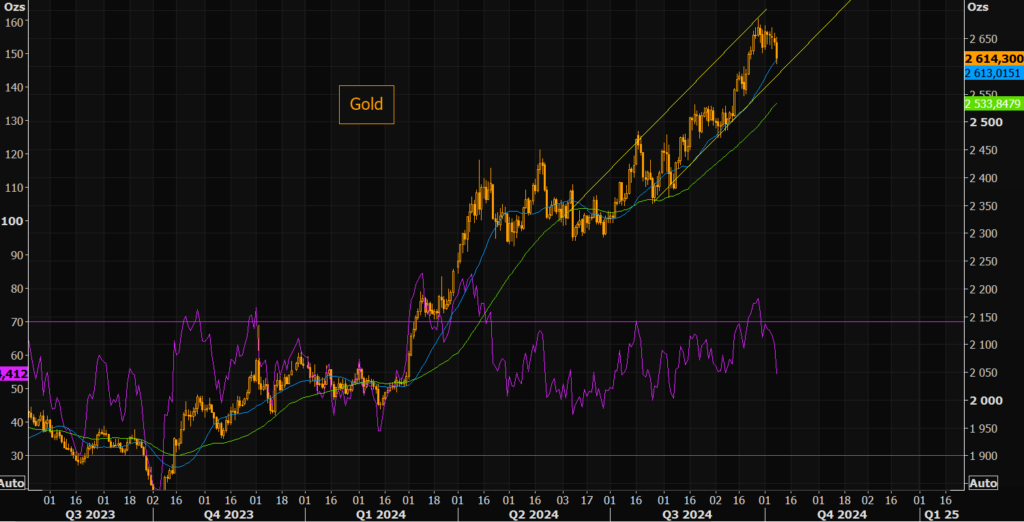Gold has recently experienced a notable downward trend, evidenced by the largest down candle on charts in some time. While the decline is not critically severe, it merits attention because gold has been widely favored among investors. The short-term trend remains operational, suggesting that despite this momentary dip, the long-term outlook for gold may still possess potential strength. Currently, gold is testing its 21-day moving average, which typically serves as a crucial pivot point for traders evaluating short-term fluctuations.
Crucial support levels are established at $2600 and $2533—figures that will be pivotal for determining gold’s resilience in the face of market pressures. Traders often look to these levels to gauge whether the asset will bounce back or continue to weaken. The $2600 level holds significant importance as it represents a psychological barrier, while the $2533 threshold, associated with the 50-day moving average, may indicate a deeper bearish movement if breached.
Compounding the situation, there is a noticeable negative divergence in the Relative Strength Index (RSI). This technical indicator highlights a discrepancy between price action and momentum, suggesting that even as gold may be holding its price, underlying strength is waning. Traders should not overlook this divergence, as it can foreshadow further declines ahead, reinforcing the need for caution in bullish positions.
Market sentiment around gold remains buoyant; it is a popular investment choice among many, particularly during times of economic uncertainty. The metal is often viewed as a safe haven that hedges against inflation and currency fluctuations. Thus, while the immediate technical indicators suggest caution, the broader narrative around gold still highlights its allure as a long-term investment amidst economic turbulence.
As such, investors might consider incorporating a dual approach in their strategies—maintaining their positions in gold while monitoring critical support levels and divergence signals. This approach can potentially safeguard against sudden market movements while leveraging any rebounds. Consistent observation of market dynamics will be necessary to adapt to evolving conditions.
In conclusion, while gold’s recent down candle may not be alarming at first glance, it certainly warrants a close watch. As the asset tests key support levels and exhibits signs of negative momentum divergence, investors should remain vigilant. Those engaged in gold trading should prioritize a blend of technical analysis and market sentiment to navigate the upcoming volatility, ensuring informed decision-making in a fluctuating market landscape.

